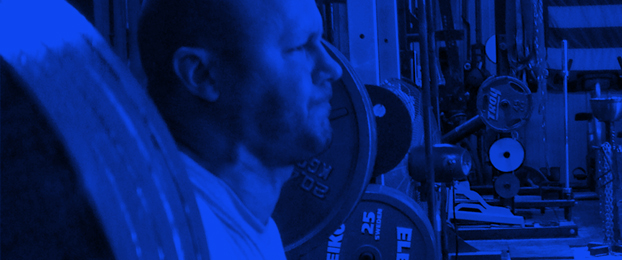

Congratulations! You’ve finally decided to take the plunge and compete in a powerlifting meet. However, there are so many questions to be answered. What federation should you compete in? How do you prepare? What do you do on meet day? My goal with this series is to give you an idea of EXACTLY what you need to do to have a successful first meet.
However, before we get into all that, let me say that just deciding that you’re going to compete is a huge step. Competing in your first meet is probably similar (albeit on a smaller level) to getting married or having a baby. You’re never totally ready, but at some point, you just have to suck it up and take the plunge.
No matter when or where you compete, there’s always going to be someone with better technique or someone who’s a little bit leaner or more muscular, and 99 percent of the time, there’s always going to be someone who’s stronger than you. And that’s fine because this isn’t about what everyone else is doing. Instead, this is all about what YOU’RE going to do.
This first article is going to cover the bare essentials of getting started—finding a meet and setting goals.
Finding a meet
The first step in our process is to figure out which federation you want to compete in. Every federation is a little different with regards to gear usage, weigh-ins, rule enforcement, and a host of other factors. For example, do you want to lift raw or equipped? Would you prefer a two-hour or 24-hour weigh-in? The answers to these questions will help you determine which federation is the best fit for you.
The next step in this process is finding a meet within that federation. Ideally, you’ll find something that’s anywhere from 3–6 months out so you have plenty of time to train and prepare. The last thing you want to do is enter a meet with only a month to prepare. When in doubt, check out the website for that federation or simply pick up the latest copy of Powerlifting USA.
When finding your meet, I highly recommend finding something that’s as close as possible to where you live. If you live in the middle of Montana, this may not be feasible. However, there’s nothing worse than driving or flying for an extended period and then having to lift, especially if it’s your first meet.
Setting goals
After you’ve determined when and where you’re lifting, the next step is to set some goals. I’m a huge believer in SMART goals:
S = Specific
M = Measurable
A = Attainable
R = Realistic
T = Timely
Let’s cover each of these in a little more depth.
Specific
“I want to do a powerlifting meet someday” is NOT specific. Instead, use your target date to say something like, “I’m going to lift in my first powerlifting meet on August 3, 2008.”
Measurable
“I want to squat a shit ton of weight” isn’t a measurable goal. After all, a shit ton is different for everyone. Instead, set your sights on a specific number, whether it’s 300, 500, or 1000. This will give you something to shoot for throughout your training. The key here is that by making it measurable, you’ll know immediately whether you hit your goal or not.
Attainable and realistic
I consider these two to be very similar to each other. A goal has to be challenging, yet it still has to be able to really motivate us. For example, if your goal is to bench press 300 lbs and your personal best is already 295 lbs, the goal may not be challenging enough to really motivate you. In contrast, if your current best is 295 lbs, but your goal for the meet in 12 weeks is 400 lbs, well, that’s just not realistic.
Timely
The timely portion of the equation is similar to the specific portion. By setting a specific deadline as to when we want to achieve our goals, we add a sense of urgency to the equation. If your goal is to “pull 405 lbs,” but there’s no date as to when you want to achieve it, there’s no sense of urgency.
If we want to pull all of these tools together to set SMART goals for a powerlifting meet, it may look something like: “I’m going to lift in my first powerlifting meet on August 3, 2008. My goals are to squat 400 lbs, bench press 300 lbs, and deadlift 500 lbs.”
However, for your first meet, setting numbers as your goals may not be of the utmost importance. Instead, another person’s goals may look like this: “I’m going to lift in my first powerlifting meet on August 3, 2008. My goal is to go 9/9 on my lifts.”
In this case, the focus isn’t so much on the weights lifted as it is on the performance of the lifting itself. This may be a better focal point for the first time competitor because they’ll have a better understanding of the rules and regulations of the sport going forward. Along those same lines, going 9/9 in your first meet will make you hungry to compete again and further your strength gains. Plain and simple, this is your FIRST meet, not your ONLY meet.
Summary
That wraps up part one of the series. In part two, we’ll discuss planning and training for the meet. Until then, get in the gym and get strong!








